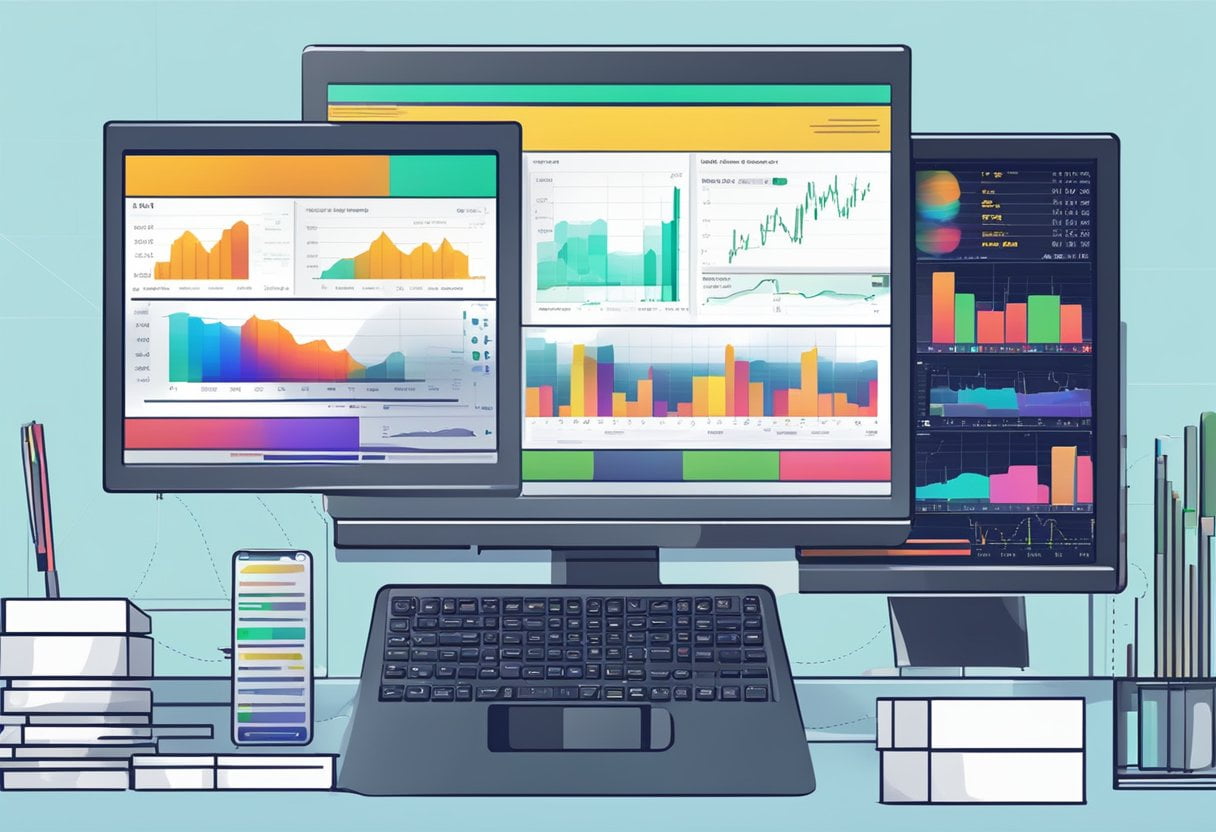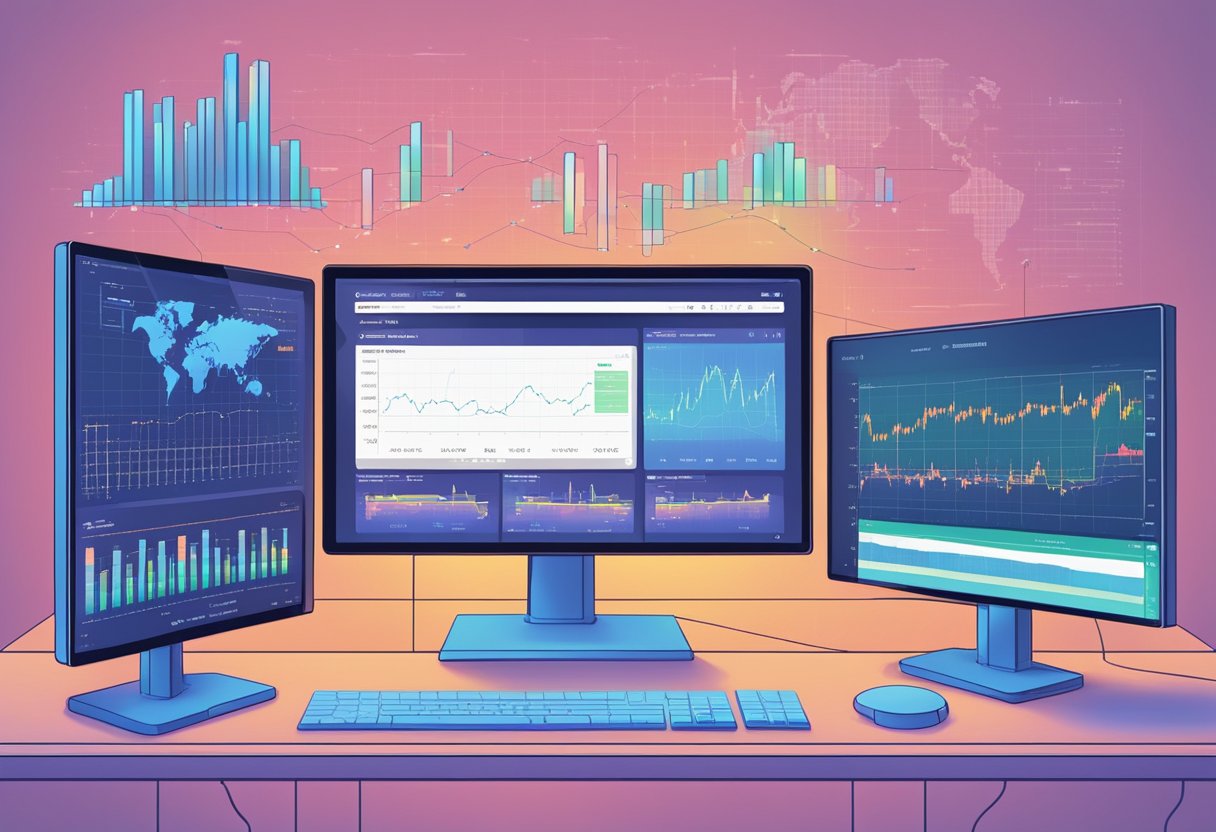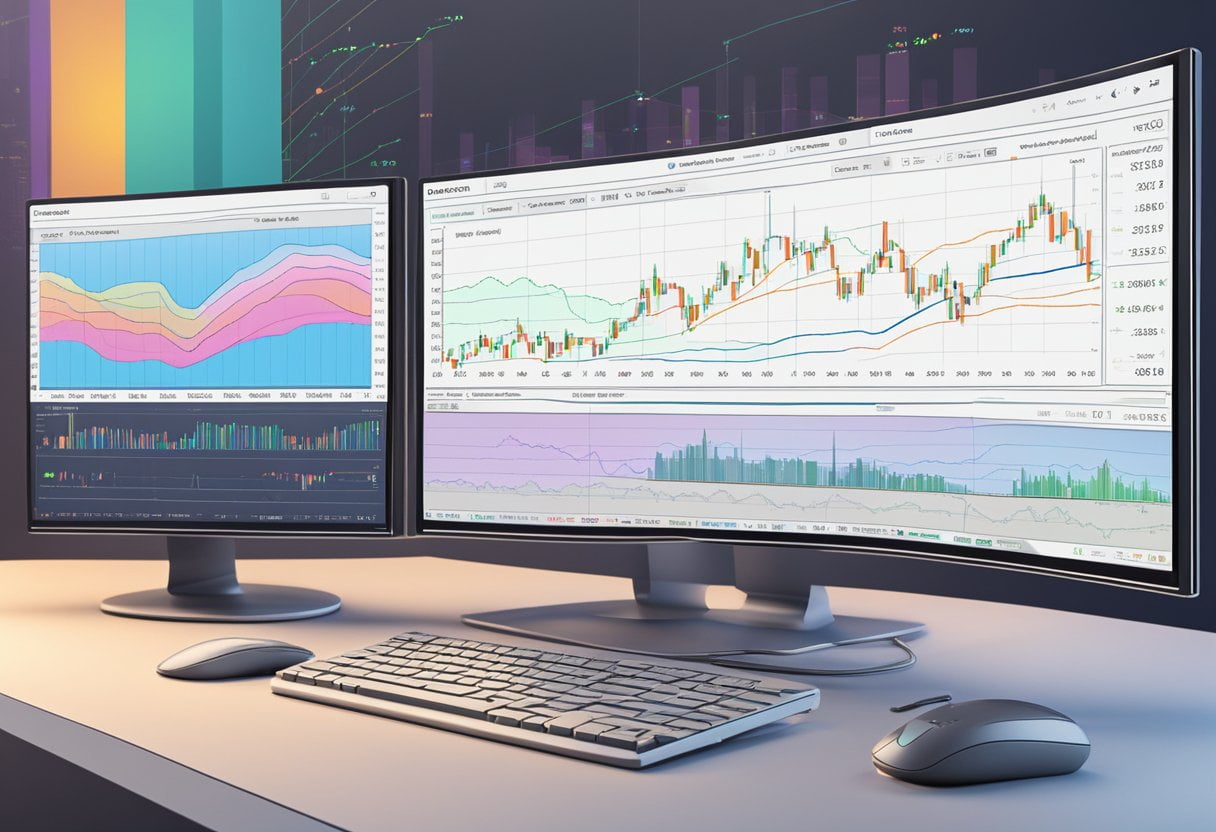How to Forecast Stock Prices Using Machine Learning and Deep Learning Algorithms: A Comprehensive Guide
Forecasting stock prices has emerged as a key challenge and area of interest for investors and financial analysts alike. Machine learning and deep learning algorithms represent cutting-edge tools in the endeavor to predict market trends and movements.
These methods are capable of processing vast amounts of data, recognizing complex patterns, and making informed predictions about future stock prices, which traditional analysis techniques may find difficult to match.
By harnessing these technologies, experts can aim for more accurate forecasts, potentially leading to better investment decisions.

Machine learning algorithms begin by identifying relationships in historical data to predict future stock price movements.
Advanced deep learning techniques, such as neural networks, go further by analyzing stock market data in a more sophisticated manner, resembling human cognitive processes. To create reliable models, it is crucial to manage data preparation and preprocessing carefully.
A well-designed prediction model considers past price movements, trading volumes, and other relevant financial indicators. Assessing a model’s performance involves backtesting against historical data and adjusting its parameters for enhanced accuracy.
Here are three key takeaways:
- Machine and deep learning algorithms are essential tools for accurately forecasting stock prices.
- A well-structured prediction model incorporates thorough data preprocessing and acknowledges financial indicators.
- Model performance evaluation is critical for refining stock predictions and mitigating forecasting errors.
Fundamentals of Stock Forecasting
Stock forecasting is a complex process that involves analyzing numerous variables to predict future stock prices. It requires a strong foundation in both financial analysis and technology, particularly in the application of machine learning and deep learning algorithms.

Historical Data Analysis
Historical data forms the backbone of stock forecasting. It is critical to understand that patterns within this data can provide insights into future movements. Analysts collect data that may include, but is not limited to, the following:
- Stock Prices: Open, high, low, and close values
- Volume: The number of shares traded
- Financial statements: Balance sheets, income statements, cash flow statements
- Market Sentiments: News articles, investor opinions, and analyst ratings
This data is then split into two sets: training and testing. The training set is used to build and train the model to understand patterns, while the testing set is employed to evaluate its predictive accuracy.
To analyze historical data, one might employ statistical measures like moving averages or exponential smoothing to identify trends. The use of time-series analysis is also prevalent. It aims to understand the sequence of data points indexed in time order to forecast future stock prices. With the support of deep learning algorithms such as Recurrent Neural Networks (RNN) or more specifically Long Short-Term Memory (LSTM) networks, analysts can model and predict complex patterns from historical prices due to their advantage in remembering information over long periods.
Technical indicators are another facet of historical data analysis. These include:
- Relative Strength Index (RSI)
- Moving Average Convergence Divergence (MACD)
- Bollinger Bands
These indicators serve as tools that help forecast future stock price movements based on historical data. They provide signals regarding overbought or oversold conditions, potential reversals, and momentum, which can be instrumental when combined with machine learning techniques for refining stock forecasts.
In summary, historical data analysis is a meticulous process requiring careful examination and manipulation of data to aid in the accurate prediction of stock market trends and movements. Using the right mix of technical indicators, along with sophisticated machine learning and deep learning models, can significantly enhance the accuracy of stock forecasts.
Understanding Machine Learning Algorithms

Machine learning algorithms play a crucial role in the analysis and prediction of stock market trends. They are capable of processing vast amounts of data to identify patterns that are often imperceptible to humans.
Regression Algorithms
Regression algorithms are used to predict continuous values such as stock prices. They work by understanding the relationship between independent variables and the dependent variable.
- Linear Regression: It establishes a linear relationship between the independent variable, say time, and the dependent variable, like stock price. This method assumes that past performance can predict future results.
- Lasso Regression: It is similar to Linear Regression but with a twist. Lasso includes a penalty term that simplifies models by reducing the number of variables, which is beneficial in preventing overfitting in stock forecast models.
Classification Algorithms
Classification algorithms categorize data into predefined classes and are useful for determining whether a stock price will increase or decrease.
- Logistic Regression: Contrary to its name, it’s a classification method. It estimates the probability of a binary outcome, making it suitable to predict whether a stock will go up (1) or down (0) based on historical data.
- Support Vector Machines (SVM): They are powerful for classification problems. SVMs find the best boundary that divides the data into classes, which can be used to determine future price movements in stocks.
Understanding these machine learning algorithms is essential for effectively forecasting stock prices, allowing investors to make more informed decisions.
Deep Learning for Stock Prediction

Deep learning models have demonstrated significant success in stock price prediction. These models excel at identifying complex patterns and trends from large datasets, making them particularly effective for financial market analysis.
Neural Networks
Neural networks consist of layers of interconnected nodes or “neurons,” which process input data to make predictions. In the context of stock prediction, they can decipher intricate patterns in historical stock data. A typical neural network configuration for stock price prediction might include:
- An input layer, representing the stock market features (e.g., opening price, volume).
- Multiple hidden layers, where feature transformation occurs.
- An output layer, providing the future stock price forecast.
A common neural network architecture used in this field is the feedforward neural network, where data moves in only one direction—forward—from input to output.
Recurrent Neural Networks
Recurrent Neural Networks (RNNs) are a class of neural networks well-suited for time series data, such as stock prices. RNNs have loops to allow information persistence, which means:
- They can store information from previous inputs in their internal state (memory).
- This makes them adept at handling sequences of data, critical for stock price trends and patterns in financial time series.
A predominant variant of RNNs used in stock price prediction is the Long Short-Term Memory (LSTM) network. LSTMs can learn which data to keep or discard, enabling them to make more accurate predictions over longer sequences without succumbing to issues like vanishing gradients.
Data Preparation and Preprocessing

Proper data preparation and preprocessing are critical steps in forecasting stock prices using machine learning and deep learning algorithms. They enhance the quality of data, ensuring that the predictive models function effectively.
Handling Missing Data
When preparing stock market datasets, one may encounter missing values. He or she must address these gaps to prevent inaccuracies in the model’s predictions. Options include:
- Deletion: Remove the rows or columns with missing data, but only if it does not significantly reduce the dataset.
- Imputation: Replace missing values with statistical estimates like the mean, median, or mode for that feature.
Feature Engineering
In feature engineering, one crafts additional relevant features from existing data to help improve model performance. Examples involve:
- Technical Indicators: Such as Moving Average Convergence Divergence (MACD), Relative Strength Index (RSI), or Bollinger Bands.
- Sentiment Analysis: Analyzing news headlines or social media to gauge market sentiment.
Normalization and Scaling
Normalization and scaling adjust the range of data features so that they contribute equally to the analysis. Procedures commonly applied are:
- Min-Max Scaling: Rescales the features to a fixed range, typically 0 to 1.
- Standardization (Z-Score Scaling): Centers the features to have a mean of 0 and standard deviation of 1.
These techniques are crucial for algorithms sensitive to the magnitude of the features, such as neural networks.
Designing a Prediction Model

When initiating the design of a prediction model for forecasting stock prices, one must consider the complexities of financial markets and the nuances of machine learning and deep learning techniques.
Model Selection
Selecting an appropriate model is critical for accurate stock price forecasting. One must assess various algorithms for reliability, speed, and data compatibility. Models like Linear Regression are suited for linear data, while ARIMA(AutoRegressive Integrated Moving Average) handles time series data well. For complex patterns, deep learning models such as LSTM (Long Short-Term Memory) networks excel due to their ability to capture long-term dependencies. Considering feature selection is paramount as well: the inclusion of relevant attributes like historical prices, volume, and even sentiment from news articles can enhance model performance.
Backtesting Strategies
Backtesting is the process of testing a predictive model on historical data to gauge its effectiveness. It involves:
- Historical Data: Utilizing relevant and extensive past stock market data to simulate real-world conditions.
- Accuracy Metrics: Implementing metrics such as MSE (Mean Squared Error), MAPE (Mean Absolute Percentage Error), and Directional Accuracy to measure the model’s predictions.
- Time-Period Robustness: A model should be backtested in different market conditions to ensure robustness.
Backtesting also involves validating the model’s performance by simulating its decision-making process for the historical period and comparing the results with the actual stock price movements. This allows for the identification of potential overfitting where the model may perform well on the training data but fail to generalize to unseen data.
Evaluating Model Performance
Accurate evaluation is crucial in assessing the effectiveness of machine learning models for forecasting stock prices. The evaluation phase determines whether the model can generalize its predictions to new data, which is essential for long-term stock forecast accuracy.
Performance Metrics
Performance metrics are quantitative measures used to assess the accuracy of a stock price forecasting model. Financial analysts often employ several metrics, such as:
- Mean Absolute Error (MAE): It reflects the average magnitude of errors in a set of predictions, without considering their direction.
- Mean Squared Error (MSE): It measures the average of the squares of the errors, thus penalizing larger errors more than MAE.
- Root Mean Squared Error (RMSE): This is the square root of MSE and it interprets errors in the units of the predicted value.
- R-squared (R²): It indicates the proportion of the variance in the dependent variable that is predictable from the independent variables.
These metrics can be displayed in a table for clarity:
| Metric | Description |
|---|---|
| MAE | Average magnitude of errors |
| MSE | Average square of errors |
| RMSE | Square root of MSE |
| R² | Proportion of variance explained |
It is important for the model to not only have low MSE, MAE, or RMSE values but also a high R² value, indicating that it captures a significant portion of the variance in stock price movements.
Overfitting and Underfitting
When a model is too complex, it might perform exceptionally well on training data but poorly on new, unseen data. This phenomenon is known as overfitting. Conversely, a model that is too simple, which does not capture the underlying trends in the data, is likely to underfit, resulting in poor predictions on both training and test data.
To detect overfitting and underfitting, one can look at the performance of the model on both the training set and a validation set:
- If the performance is significantly better on the training set compared to the validation set, the model is likely overfitting.
- If the performance is poor on both, the model may be underfitting.
Visual aids like learning curves can be helpful here. Learning curves plot the model’s performance on the training and validation sets over time. These plots can show whether a model is learning and generalizing well or if it’s suffering from overfitting or underfitting.
Implementation Challenges
When applying machine learning and deep learning algorithms to forecast stock prices, practitioners must navigate specific challenges such as dealing with market volatility and processing real-time data efficiently.
Market Volatility
Stock markets are inherently volatile, with prices fluctuating due to a myriad of factors like economic indicators, political events, and market sentiment. This volatility introduces noise into the data, which can lead to:
- Overfitting: When a model captures the noise in the dataset rather than the underlying pattern, it performs poorly on unseen data.
- Non-stationarity: Stock data statistical properties, such as mean and variance, change over time, complicating the model’s ability to make accurate predictions.
Real-Time Data Processing
Implementing algorithms that can process and analyze data in real-time poses a considerable challenge given:
- Volume: The vast amount of data generated every second requires robust infrastructure.
- Velocity: Algorithms need to be optimized for speed to act on rapidly incoming data.
- Latency: The time delay from data capture to decision-making should be minimized to retain the relevance of the insights gained.
Strategies for Long-Term Forecasting
In the realm of stock market forecasting, long-term predictions require a robust understanding of market dynamics and an integration of diverse datasets. The utilization of advanced machine learning and deep learning algorithms plays a pivotal role in this strategic analysis.
Fundamental Analysis
Fundamental analysis is a cornerstone of long-term stock prediction, whereby machine learning algorithms are trained on a variety of financial data. Key metrics such as earnings reports, balance sheets, and cash flow statements are ingested and analyzed. Machine learning models interpret these large datasets to identify trends and predict future stock performance. For instance, regression analysis can provide insight into how fundamental indicators like P/E ratios and dividend yields influence stock prices over extended periods.
Sentiment Analysis
Sentiment analysis leverages natural language processing (NLP) techniques, a subset of deep learning, to decipher market sentiment from textual data sources. This includes news articles, social media posts, and financial reports. Deep learning models such as Long Short-Term Memory (LSTM) networks can dissect and comprehend the complexities of human language, extracting actionable insights from the subjective commentary. The models quantify the sentiment and correlate it with stock price movements, offering investors a nuanced view of public perception’s impact on stock values over time.
Ethical Considerations and Compliance
When forecasting stock prices using machine learning and deep learning algorithms, it is critical to address ethical considerations and ensure compliance with all applicable laws and guidelines.
Data Privacy
Organizations must ensure that data used in forecasting models is handled with utmost confidentiality and compliancewith data protection laws, such as the GDPR and CCPA. It’s necessary to:
- Anonymize personal data to protect individual privacy.
- Implement robust security measures to prevent data breaches.
Regulatory Requirements
Forecasting stock prices using machine learning falls under the scrutiny of financial regulatory bodies. Firms must:
- Adhere to securities laws, which may vary by country and region, to prevent misuse of market-moving information.
- Maintain transparency in model operations to avoid the dissemination of misleading financial advice.
Future Trends in Stock Forecasting
The evolution of stock price prediction embraces new data sources and continuous advancements in artificial intelligence. These two pillars are expected to enhance the precision of forecasting models.
Incorporating Alternative Data
With the rise of machine learning in stock price prediction, the integration of alternative data has become a focal point. Investment firms and analysts are increasingly relying on non-traditional data sets that are indicative of market sentiment and economic health. These datasets include:
- Social media analytics: Sentiment analysis of social platforms to gauge consumer mood.
- Web traffic and usage statistics: Data indicating consumer preference trends.
- Satellite imagery: Examination of activity levels at commercial hubs to predict economic changes.
By analyzing these unconventional data sources, forecasting models can provide a multidimensional view of potential stock movements, beyond what traditional financial indicators reveal.
Advancements in AI
The field of artificial intelligence is witnessing remarkable growth, which continuously shapes the domain of stock price prediction. Key advancements include:
- Deep learning algorithms: More sophisticated neural network architectures, like LSTMs (Long Short-Term Memory networks), are being refined to better understand and predict complex market patterns.
- Reinforcement learning: In which algorithms learn to make trading decisions through the simulation of numerous trading scenarios to maximize profit.
- Quantum computing: Though in nascent stages, quantum computing holds the potential to process vast datasets and execute complex financial models much faster than current computers.
Conclusion
Machine learning and deep learning algorithms have significantly enhanced the accuracy of stock price forecasts. Investors and analysts now have sophisticated tools at their disposal to predict future price movements. Through these data-driven techniques, the unpredictability of the stock market can be analyzed to reveal trends and patterns that are invisible to the naked eye.
The application of models such as ARIMA, LSTM, and Convolutional Neural Networks has reinforced that technology can handle vast amounts of data and identify complex relationships. This is crucial in the dynamic environment of financial markets where traditional methods may fall short. However, while machine learning and deep learning offer substantial improvements, it is imperative for users to recognize that forecasts are probabilistic and not guarantees.
Key elements for successful implementation of these technologies include:
- High-quality, granular data
- Rigorous model training and validation
- Continuous model optimization and testing
Market sentiment analysis and algorithmic trading are direct beneficiaries of these advancements. These automated systems can process and react to new information much faster than humans, often capitalizing on profitable opportunities in a split second.
In conclusion, while machine learning and deep learning tools revolutionize stock price forecasting, a cautious and informed approach is essential. No algorithm can predict market movements with complete certainty, and external factors can always introduce volatility. The symbiosis of advanced analytics and human expertise will likely remain the cornerstone of successful financial forecasting.
